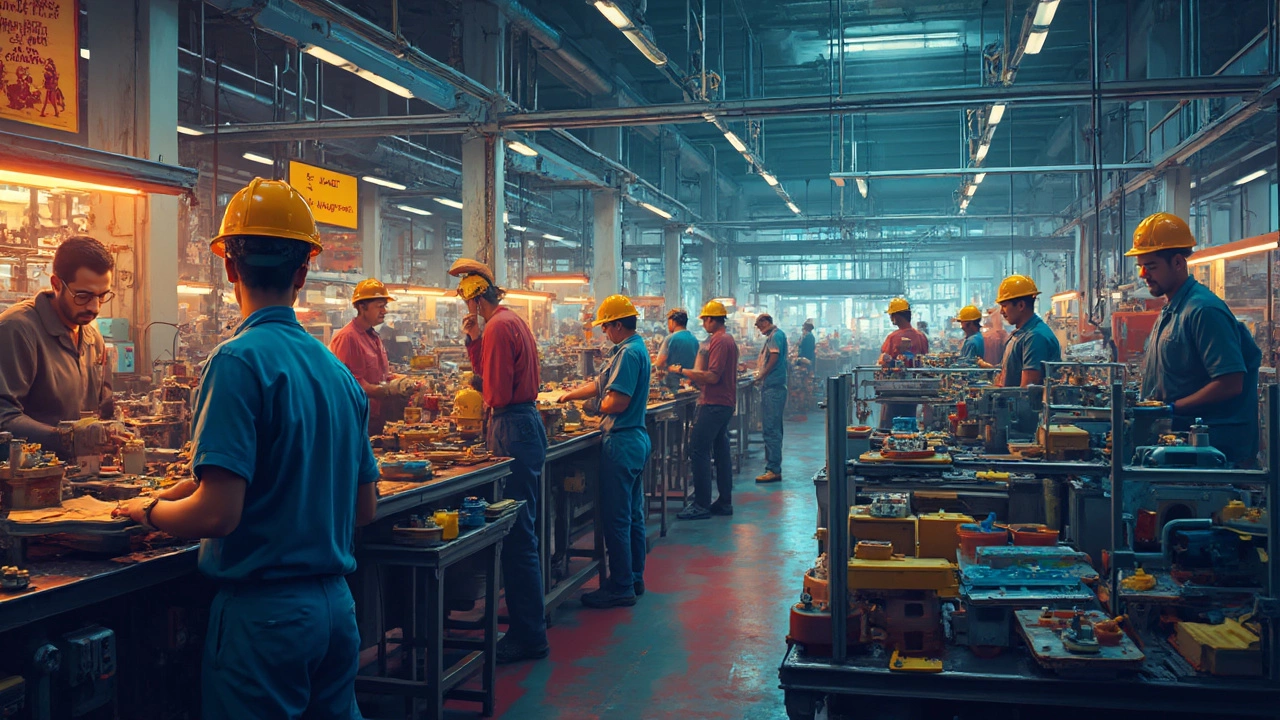Mexico Manufacturing Issues: What’s Holding Production Back?
If you’re operating a plant in Mexico or thinking about setting one up, you’ve probably heard about a few roadblocks. From unpredictable power supply to changing labor laws, these issues can cut into profit and delay shipments. In this guide we break down the most common problems and give you simple steps to handle them.
1. Power, Water, and Infrastructure Gaps
Many factories in northern and central Mexico report frequent power cuts. When the grid flickers, machines stop, and downtime adds up fast. A practical fix is to invest in a small backup generator or a solar‑plus‑storage system. Even a modest 50 kW unit can keep critical equipment running and protect your schedule.
Water shortages also surface during hot months, especially for food‑processing or metal‑working plants that need steady cooling. Partner with local water‑treatment firms or install a recycling loop to reuse runoff. It costs a bit upfront but saves you from costly production halts.
2. Labor Rules and Workforce Skills
Mexico’s labor reforms have shifted overtime rules and minimum‑wage rates. If you’re not tracking these changes, payroll can balloon unexpectedly. The easiest way to stay compliant is to use a cloud‑based HR platform that updates automatically with federal guidelines.
Skill gaps are another pain point. While the country boasts a large labor pool, many workers lack training on CNC machines, robotics, or ISO standards. Set up a short on‑site training program or work with a local technical school. A few weeks of hands‑on learning can boost productivity by 10‑15%.
3. Trade and Tariff Uncertainty
US‑Mexico‑Canada Agreement (USMCA) has smoothed many cross‑border flows, but unexpected tariff tweaks still happen. Keep an eye on the official USMCA portal and work with a customs broker who can flag changes early. If a product faces a sudden duty hike, consider shifting part of the value‑chain to a nearby free‑trade zone to keep costs low.
4. Supply‑Chain Bottlenecks
Raw‑material delays are common, especially for steel, plastics, and certain electronics components. Diversify suppliers across the region – don’t rely on a single plant in Monterrey or Guadalajara. Also, maintain a safety stock of high‑turn items; a two‑week buffer often prevents a line‑stop.
5. Environmental and Regulatory Compliance
Mexico’s environmental rules have tightened, especially concerning emissions and waste disposal. Failing an inspection can shut down a plant for weeks. Conduct a quick self‑audit: check that filters are clean, waste is documented, and permits are up‑to‑date. Hiring a local environmental consultant for an annual review is a cheap insurance policy.
By addressing these five areas – power, labor, trade, supply chain, and environment – you can turn most headaches into manageable tasks. The key is to stay proactive: monitor local news, keep good relationships with utilities, and build a skilled workforce that can adapt.
Got a specific problem you’re wrestling with? Drop a comment or reach out to a local industry association. Most manufacturers in Mexico have faced the same hurdles, and sharing solutions can save everyone time and money.
Disadvantages of Manufacturing in Mexico: What You Need to Know
Manufacturing in Mexico seems alluring due to its cost efficiencies and proximity to the U.S., but it's not without its flaws. Entrepreneurs must navigate challenges like fluctuating trade policies, complex regulations, and variable infrastructure quality. Labor costs, although initially low, can increase over time, and the reliance on certain industries makes it a risk-laden venture. Understanding these drawbacks is crucial for business success.
Read More




